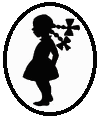

Serbian medievil clothing was similar to to that of the rest of the former Romann Emipre. Men and women wore long robes. As Europe was experiencing the Renaissance and transitioning into the modern age, however, it was conquered by the Ottoman Empire (14th and 15 centuries). Thus Ottoman styles began to influence Serbia and the Balkans. This was the foundation from which Serbian traditional styles began to develop. These styles became prominent not only in Serbia proper, but to varying degrees in Bosnia and Herzegovina, Croatia, anf Montenegro where many Serbs lived as well as Albania, Bulgarai, Greece, and Macedonia. There were of course many regioinal differences. And as the Austrian Empire began to expand we begin to see more European influences, especially drindl dresses. What became seen as Serbian traditional dresses are basically peasant attire in the 18th century. As with most traditional styles, girls wore scaled dowm verisons of their mothers' outfits. Traditional Serbian female dress consisted of blouses and skirts. These were varied, often consisting of plaited or gathered and embroidered linen, with tkanice serving as a belt. Aprons (pregače) becane important and were richly decorated with stylized floral motifs. Blouses completed the outfit. They looked like tunics but of course were tucked into the skirt. Thety were also extensively decorated. Less common were sleeveless dresses of red or blue cloth worn at knee length, well decorated and buttoning up the front.
These garments were still common into the early-20th century, especially iun rural areas, but are now only worn for special, festive occasions. At first seen mostly in the cities, modern European dress styles slowly became wide spread. Here Austria/Germany seens to have been the primary influence, but girls' clothing are generally not as country specific as boys' clothing. Thus it is impossible to identify Serbian photographs without some sort of provinance.
Navigate the Boys' Historical Clothing Web Site:
[Return to the Main European girls country page]
Main girls country page]
[Return to the Main girls page]
[Return to the Main Scottish page]
[About Us]
[Activities]
[Biographies]
[Chronology]
[Color]
[Countries]
[Difficult images]
[Families]
[Garments]
[Gender conventions]
[Hair]
[Literature]
[Photo intrpretation]
[School]
[Sisters]
[Return to the Historical Girls Clothing Home Site]
